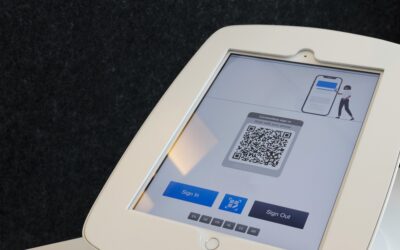In the ever-evolving landscape of business, the onboarding process has emerged as a critical component in ensuring employee success and retention. Onboarding checkpoints serve as pivotal milestones that guide new hires through their initial experiences within an organization. These checkpoints are not merely procedural; they are strategic touchpoints designed to facilitate a seamless transition into the company culture, expectations, and operational frameworks.
By establishing a structured onboarding process, organizations can significantly enhance employee engagement and productivity from day one. The integration of technology into onboarding processes has revolutionized how businesses approach these checkpoints. With platforms like SMS-iT, which unifies CRM, ERP, and over 60 microservices powered by Agentic AI, organizations can automate and optimize their onboarding procedures.
This innovative approach allows for a more personalized experience, ensuring that new employees receive the necessary support and resources tailored to their specific roles.
As we delve deeper into the significance of onboarding checkpoints, it becomes evident that they are not just a formality but a strategic investment in the future of the workforce.
Key Takeaways
- Onboarding checkpoints are crucial for successful integration of new employees into an organization, ensuring a smooth transition and alignment with company goals and culture.
- Effective onboarding checkpoints help in reducing employee turnover, increasing productivity, and improving employee satisfaction and engagement.
- Silent failure in onboarding often occurs due to lack of clear expectations, inadequate training, poor communication, and insufficient support from managers and colleagues.
- Creating effective onboarding checkpoints involves setting clear goals, providing necessary resources and training, and establishing regular feedback mechanisms.
- Implementing onboarding checkpoints in the hiring process requires collaboration between HR, managers, and team members to ensure a comprehensive and personalized onboarding experience for new employees.
The Importance of Onboarding Checkpoints
Onboarding checkpoints play a crucial role in shaping the trajectory of an employee’s journey within an organization. They provide structured opportunities for feedback, learning, and adjustment, which are essential for fostering a sense of belonging and purpose. When new hires are guided through these checkpoints, they are more likely to understand their roles, align with company values, and feel empowered to contribute meaningfully to their teams.
This structured approach not only enhances individual performance but also cultivates a positive organizational culture. Moreover, effective onboarding checkpoints can lead to significant reductions in turnover rates. Research indicates that employees who undergo a comprehensive onboarding process are 69% more likely to remain with a company for three years or more.
By leveraging SMS-iT’s capabilities, organizations can create a dynamic onboarding experience that adapts to the needs of each employee. The platform’s built-in communications tools—ranging from SMS and email to voice and video—facilitate ongoing dialogue between new hires and their managers, ensuring that any concerns or questions are addressed promptly.
Common Reasons for Silent Failure in Onboarding
Despite the clear benefits of onboarding checkpoints, many organizations still experience silent failures during this critical phase. One common reason is the lack of clarity regarding expectations and responsibilities. When new hires are not provided with clear guidelines or objectives, they may feel lost or overwhelmed, leading to disengagement.
This ambiguity can result in decreased productivity and increased frustration, ultimately affecting retention rates. Another significant factor contributing to silent failures is insufficient communication. In many cases, organizations fail to establish open lines of communication between new hires and their teams.
This lack of interaction can create feelings of isolation and uncertainty, making it difficult for employees to integrate into the company culture. By utilizing SMS-iT’s comprehensive communication tools, organizations can bridge this gap, ensuring that new hires receive timely updates and support throughout their onboarding journey.
Creating Effective Onboarding Checkpoints
Creating effective onboarding checkpoints requires a thoughtful approach that considers the unique needs of both the organization and its new employees.
First and foremost, it is essential to define clear objectives for each checkpoint.
These objectives should align with the overall goals of the organization while also addressing the specific skills and knowledge required for each role.
By establishing measurable outcomes, organizations can track progress and make necessary adjustments to the onboarding process. Additionally, incorporating feedback mechanisms into onboarding checkpoints is vital for continuous improvement. By soliciting input from new hires about their experiences, organizations can identify areas for enhancement and adapt their processes accordingly.
SMS-iT’s Workflow Builder allows organizations to design customized onboarding experiences that incorporate feedback loops, ensuring that each checkpoint is not only effective but also responsive to the needs of employees.
Implementing Onboarding Checkpoints in the Hiring Process
Integrating onboarding checkpoints into the hiring process is essential for setting the stage for success. This integration begins even before a new hire’s first day; organizations should communicate the structure and purpose of the onboarding process during the recruitment phase. By outlining what new employees can expect, organizations can alleviate anxiety and foster excitement about joining the team.
Once a new hire begins their journey, implementing onboarding checkpoints at regular intervals—such as after the first week, month, and quarter—can provide valuable opportunities for assessment and adjustment. These checkpoints should include discussions about performance expectations, cultural integration, and professional development goals. With SMS-iT’s RAAS (Results-as-a-Service) model, organizations can ensure predictable outcomes by leveraging data-driven insights to refine their onboarding strategies continuously.
The Role of Managers in Onboarding Checkpoints
Managers play a pivotal role in the success of onboarding checkpoints. They are not only responsible for guiding new hires through the process but also for fostering an environment of support and encouragement. Effective managers understand that onboarding is an ongoing journey rather than a one-time event; they actively engage with new employees to provide mentorship and guidance throughout their initial months.
Moreover, managers should be equipped with the tools necessary to facilitate meaningful conversations during onboarding checkpoints. SMS-iT’s suite of smart tools enables managers to track employee progress, set reminders for follow-up meetings, and access performance metrics in real time. By leveraging these resources, managers can ensure that they are providing timely feedback and support, ultimately enhancing the overall onboarding experience.
Monitoring and Evaluating Onboarding Checkpoints
Monitoring and evaluating onboarding checkpoints is essential for determining their effectiveness and making data-driven improvements. Organizations should establish key performance indicators (KPIs) to assess various aspects of the onboarding process, such as employee engagement levels, retention rates, and time-to-productivity metrics. By analyzing these KPIs regularly, organizations can identify trends and areas for improvement.
Additionally, utilizing SMS-iT’s analytics capabilities allows organizations to gain deeper insights into their onboarding processes. With access to real-time data on employee performance and engagement, organizations can make informed decisions about how to enhance their onboarding checkpoints continually. This proactive approach not only benefits new hires but also contributes to the overall success of the organization.
Addressing Challenges in Onboarding Checkpoints
While implementing effective onboarding checkpoints is crucial, organizations may encounter various challenges along the way. One common challenge is resistance to change from existing employees who may be accustomed to traditional onboarding methods. To address this resistance, it is essential to communicate the benefits of the new approach clearly and involve current employees in the process.
Another challenge is ensuring consistency across different departments or teams within an organization. Each department may have unique requirements or expectations for new hires, which can lead to confusion if not managed effectively. By utilizing SMS-iT’s unified platform, organizations can standardize their onboarding processes while still allowing for customization based on departmental needs.
This balance ensures that all new hires receive a consistent experience while also addressing specific role-related requirements.
Onboarding Checkpoints for Remote Employees
As remote work becomes increasingly prevalent, organizations must adapt their onboarding processes to accommodate remote employees effectively. Onboarding checkpoints for remote workers should prioritize virtual engagement and communication to foster connection despite physical distance. Utilizing SMS-iT’s built-in communication tools—such as video conferencing and instant messaging—can help create a sense of community among remote teams.
Additionally, remote onboarding checkpoints should focus on providing resources that enable new hires to succeed in a virtual environment. This includes access to digital training materials, virtual team-building activities, and regular check-ins with managers or mentors. By leveraging SMS-iT’s capabilities, organizations can create a comprehensive remote onboarding experience that ensures new employees feel supported and connected from day one.
Case Studies: Successful Onboarding Checkpoints
Numerous organizations have successfully implemented effective onboarding checkpoints that have led to improved employee engagement and retention rates. For instance, a leading tech company utilized SMS-iT’s Workflow Builder to create a customized onboarding experience that included regular check-ins with managers and peer mentors. As a result, they reported a 30% increase in employee satisfaction scores within the first three months of employment.
Another case study highlights a retail organization that integrated SMS-iT’s communication tools into their onboarding process for remote employees. By facilitating virtual team-building activities and providing ongoing support through video calls, they achieved a remarkable 25% reduction in turnover rates among new hires within their first year. These success stories demonstrate the transformative power of effective onboarding checkpoints when supported by innovative technology.
The Future of Onboarding Checkpoints
As businesses continue to evolve in response to changing workforce dynamics, the future of onboarding checkpoints will undoubtedly be shaped by technological advancements and innovative practices. Organizations that embrace platforms like SMS-iT will be better equipped to create personalized onboarding experiences that foster engagement and retention among new hires. In conclusion, effective onboarding checkpoints are essential for setting employees up for success within an organization.
By prioritizing clear communication, continuous feedback, and leveraging advanced technology like SMS-iT’s Agentic AI platform, businesses can transform their onboarding processes into strategic assets that drive results. Join the No-Stack Revolution today by exploring SMS-iT’s offerings through a free trial or demo—experience firsthand how you can elevate your onboarding process and empower your workforce for success!
FAQs
What is onboarding?
Onboarding is the process of integrating a new employee into an organization and familiarizing them with the company’s culture, policies, and procedures.
What are onboarding checkpoints?
Onboarding checkpoints are specific milestones or checkpoints within the onboarding process that help ensure new employees are successfully integrating into the organization.
What is silent failure in the context of onboarding?
Silent failure in onboarding refers to the situation where a new employee is not successfully integrating into the organization, but the issue goes unnoticed or unaddressed by the company.
Why is preventing silent failure important in onboarding?
Preventing silent failure in onboarding is important because it ensures that new employees are effectively integrated into the organization, which can lead to higher job satisfaction, productivity, and retention rates.
What are some common onboarding checkpoints that can help prevent silent failure?
Common onboarding checkpoints that can help prevent silent failure include setting clear expectations, providing adequate training and resources, assigning a mentor or buddy, and conducting regular check-ins with the new employee.









